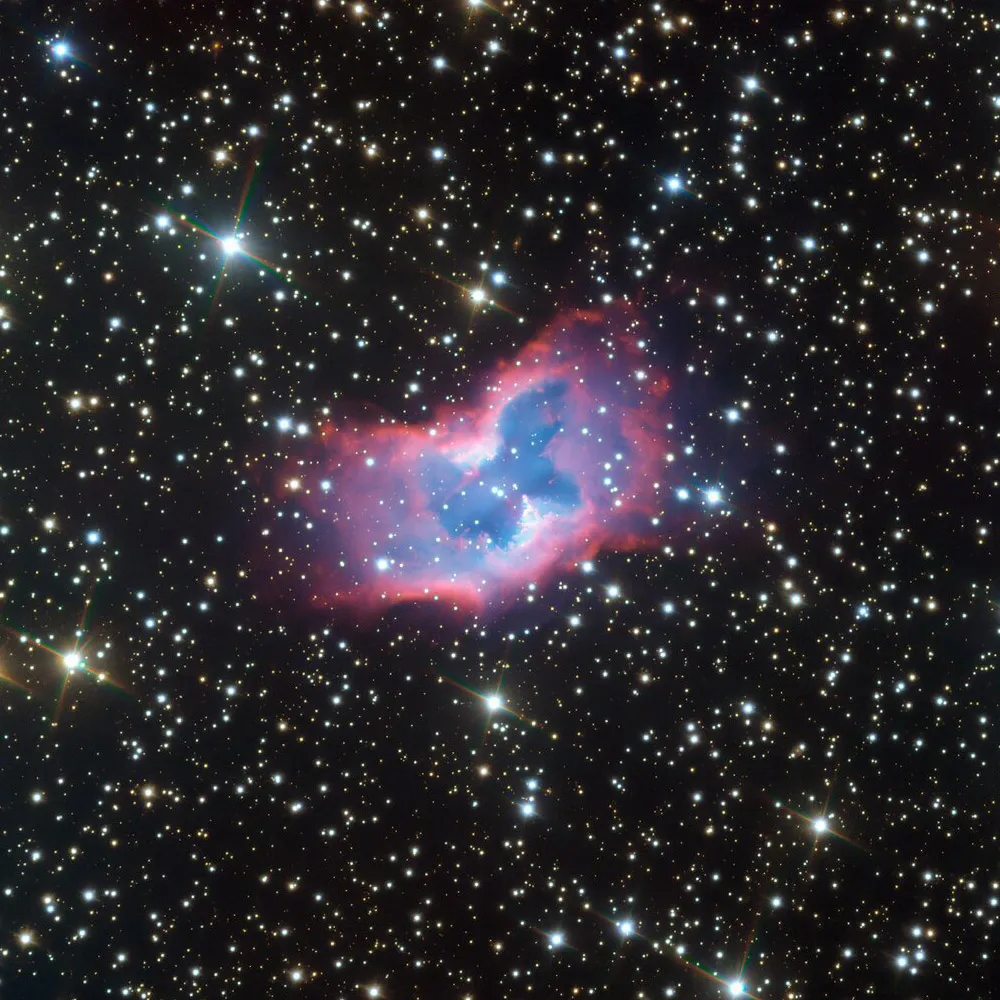
This is planetary nebula NGC 2899, as seen in a new image captured using the Very Large Telescope. It's the sharpest, most detailed image of the nebula ever produced.
NGC 2899 is about 3,000 - 5,000 lightyears away in the constellation of Vela.
Planetary nebulae have nothing to do with planets, as their name might suggest, but are so-called because they are dying stars that expel layers of gas and material into space, usually producing a spherical, planetary shape.
In the case of NGC 2899, however, 2 stars are thought to be involved, creating a 2-pronged butterfly shape instead.
It's thought that after 1 of the 2 stars reached the end of its life and began casting off its outer layers, the other star started interfering with the flow of gas, producing the 2-lobe shape.
Astronomers captured this image using the FORS instrument on the VLT, revealing clarity and sharpness never seen in other images of the target. Even the fainter edges of the nebula glow brighter than the background stars.
- Find out more about in our beginner's guide to nebulae.
Image stats
Observatory Very Large Telescope
Release date 30 July 2020
Image credit ESO
